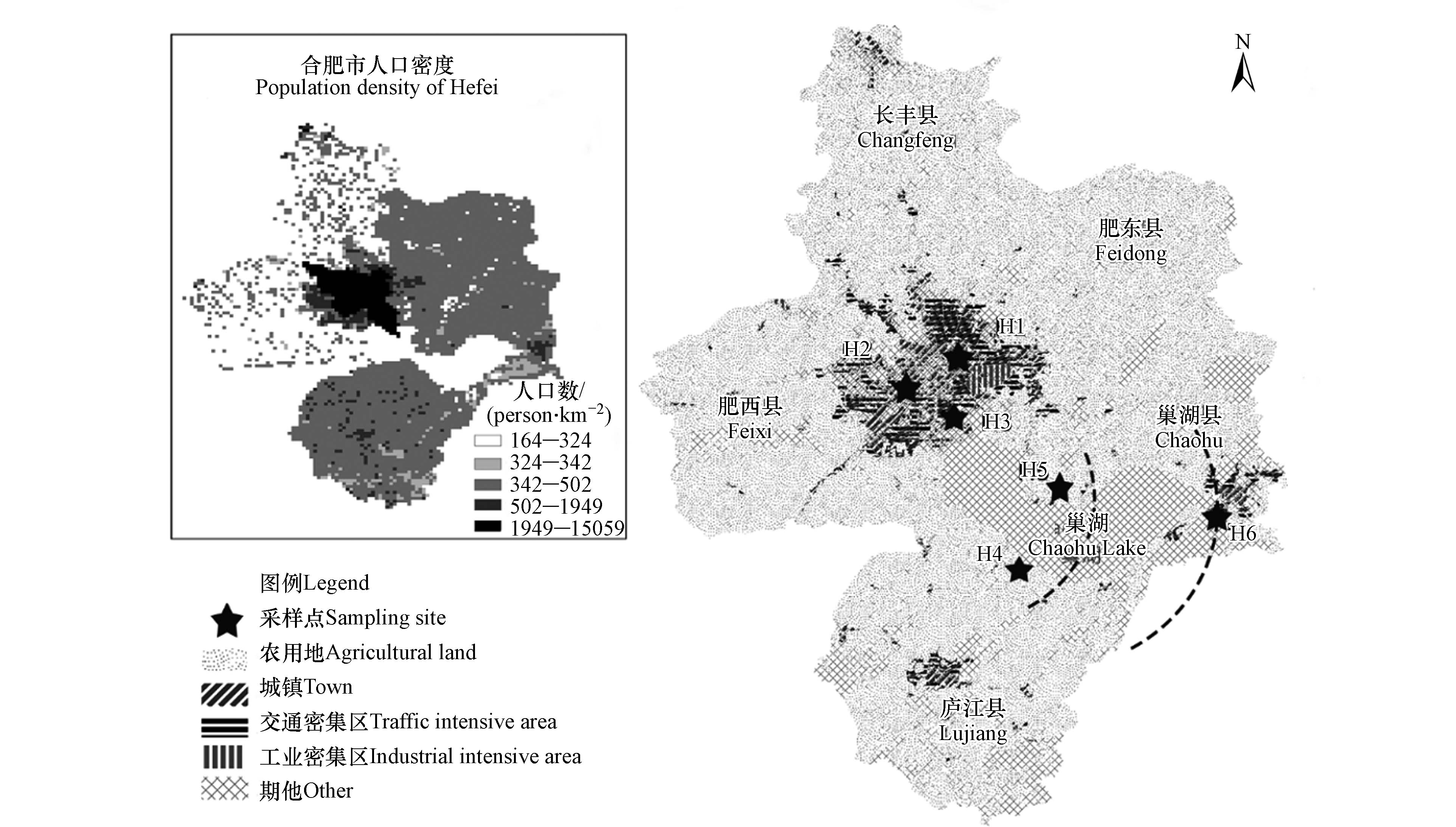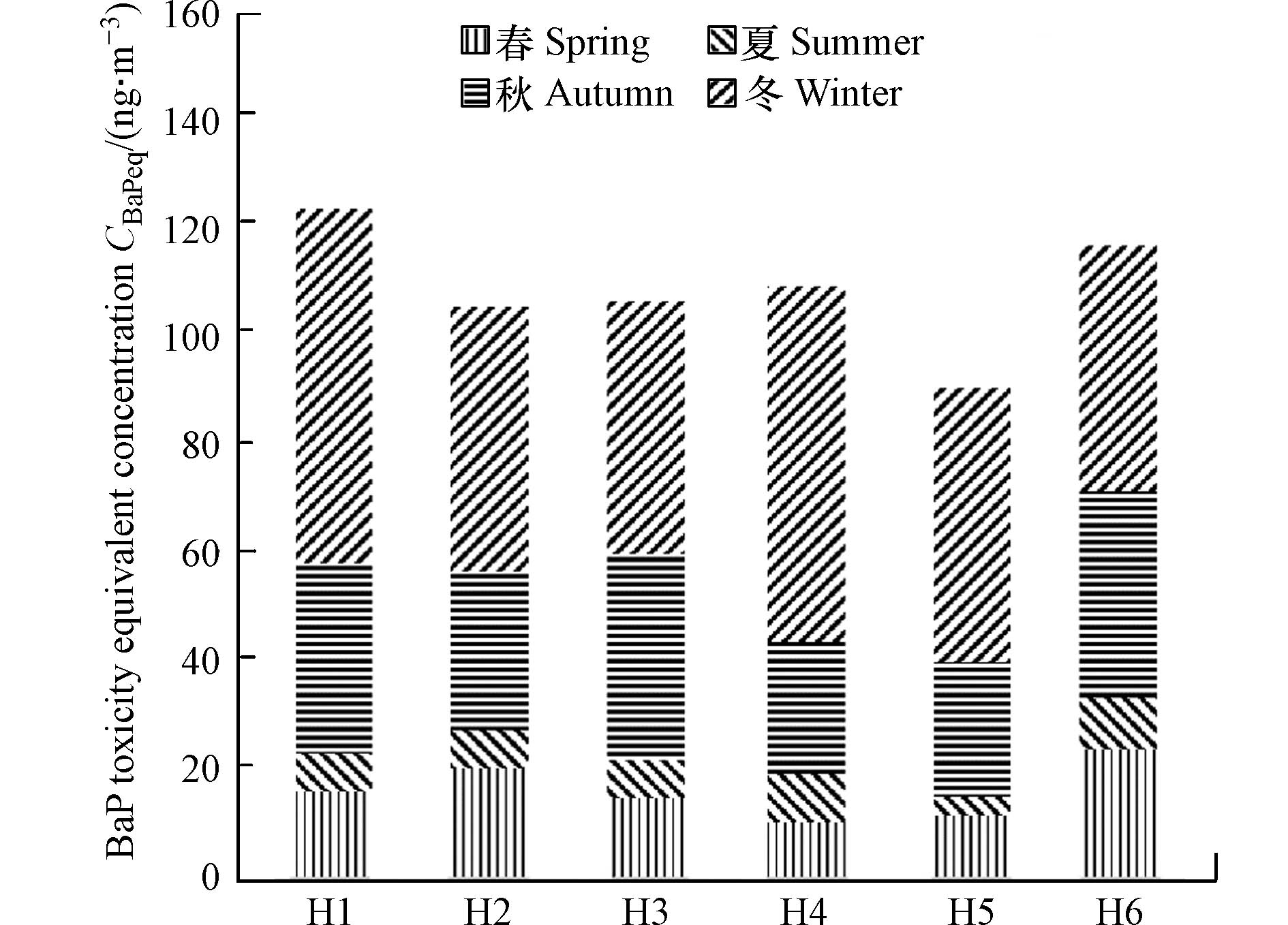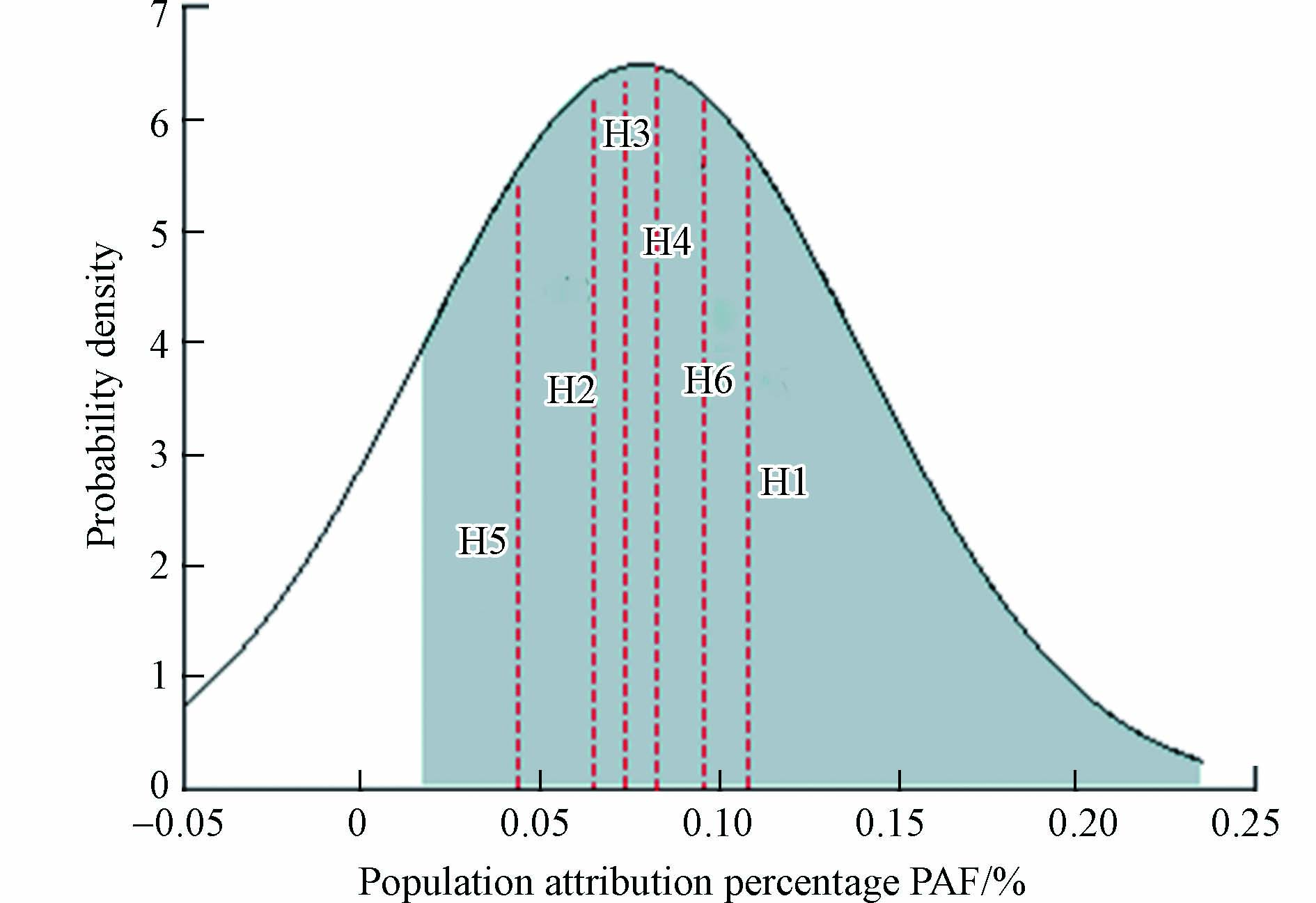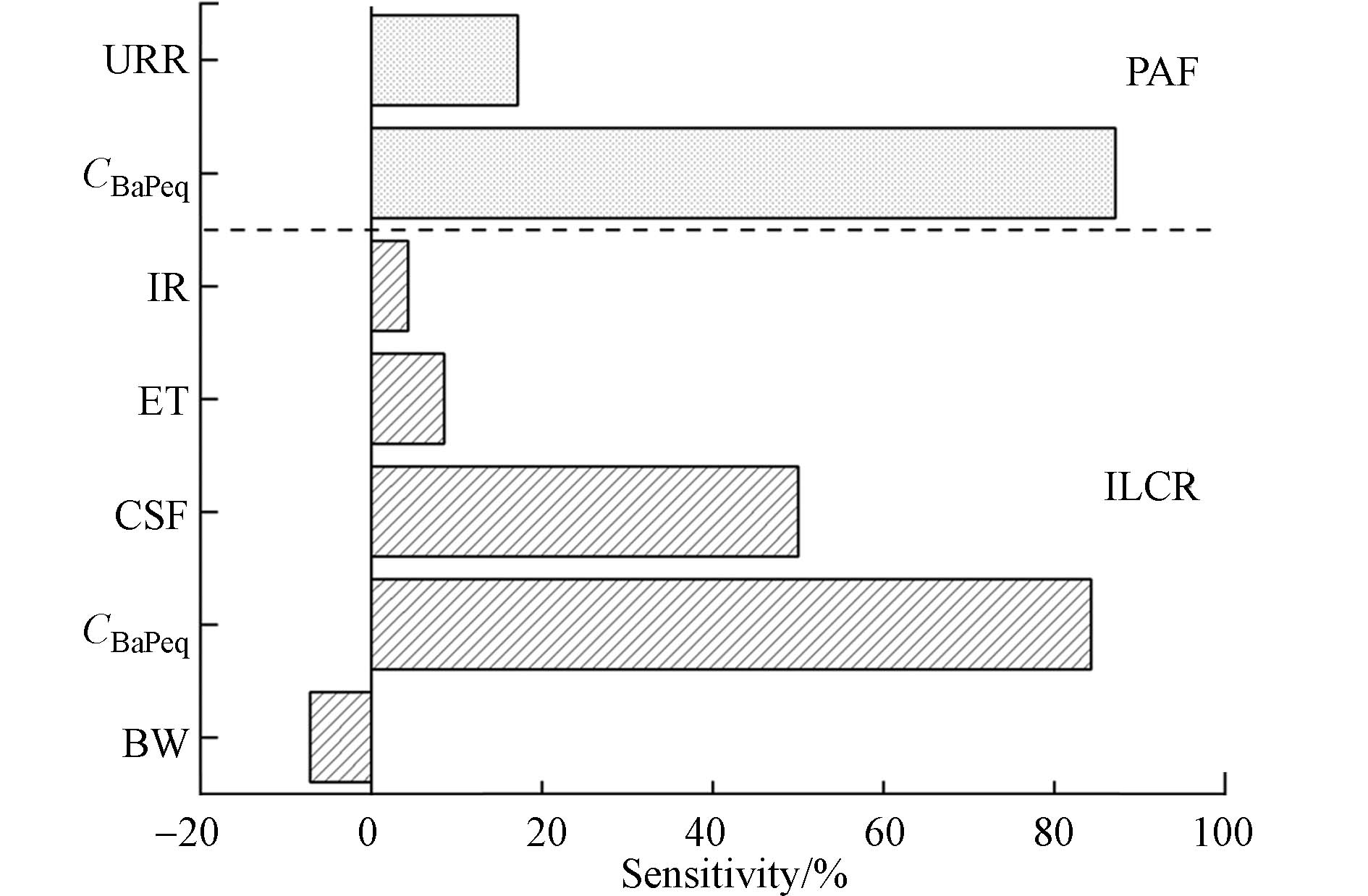-
由于生物电化学系统(bioelectrochemical systems, BESs)能够在降解污染物的同时产生电能,因此是一种很有前途的固体废物和废水处理技术[1-3]。近年来,研究人员开始关注利用BESs对污水处理厂污泥进行处理[4-6],实现污泥稳定化和减量化,同时还可以在污泥中回收电能[7]。2004年,研究人员首次利用BESs技术进行污泥降解[8],并可达到较高的原位能源回收效率和污泥降解效率[9]。目前,BESs已经可以实现成分复杂的城市废水的处理[10]。然而,BESs对污泥有机质的利用效率和能源回收效率都较低,这一缺陷制约了其进一步应用。
污泥中有机物浓度高,组成复杂,主要包括蛋白质和碳水化合物两类物质[11],并存在大量的细胞结构。陈曦等[12]指出,在污泥生物能回收利用过程中,为了实现剩余污泥资源回收最大化,必须充分将污泥细胞内有机质释放出来,而细胞膜壁的刚性结构对实现这一目标提出了不小挑战。此外,上述两类物质水解速率缓慢,限制了其被微生物利用的效率[13]。因此,在对污泥进行微生物降解之前,通常进行污泥预处理,使其中的难降解物质转化为更易被微生物利用的形态[14-15]。
研究人员采用多种预处理方法来提高污泥在BESs中降解和能量回收的效能,如热处理[16]和碱处理[17]可以有效地提高可溶性化学需氧量(soluble chemical oxygen demand,SCOD)浓度,从而提升SMFC的功率输出;微波处理[18]能够显著提高SMFC的产电效率;超声处理[15]可以增强后续SMFC的产电能力,提高TCOD及VS降解效率。Wu等[19]研究发现,酸预处理(pH=3)和碱预处理(pH=10)分别使污泥中短链脂肪酸产量提高了15.3倍和12.5倍。陈汉龙等[20]研究表明,预处理pH值为9、10、11、12和13时,污泥中化学需氧量(chemical oxygen demand,COD)的溶出率分别为6.5%、18.0%、36.7%、65.5%和83.5%,表明强碱预处理有利于污泥中COD的溶出。同时,碱性预处理可以增加污泥的SCOD,从而显著提高污泥在BESs中的电能回收[18, 21];且污泥的可溶性随着氢氧化钠用量的增加和反应时间的延长而逐渐提高。
然而,酸碱预处理对单室微生物燃料电池(single-chamber MFC,SMFC)性能的影响尚未进行研究和比较。因此,本文比较了不同酸碱预处理对BESs性能和污泥降解的影响,其中包括电能回收、COD去除和挥发性脂肪酸积累方面的比较。
全文HTML
-
污泥样品采集自当地城市污水处理厂的二沉池污泥,其中样品不含重金属离子。污泥样品在4 ℃下保存,待用。使用便携式数字多线pH计(Multi 3430, SETF, WTW, 德国)测定污泥的pH值。污泥(原始pH值为6.5)通过盐酸(2 mol·L−1)和氢氧化钠溶液(2 mol·L−1)分别调整pH值为2、4、7、10和12,其对应的污泥样本分别标记为S2、S4、S7、S10和S12。污泥的pH完成调整后,在室温下保持15 h,完成污泥的酸碱预处理操作。酸碱预处理后,所有样本pH值调整为7(依据前述方法进行)。最后将所有污泥样本体积调整一致。
-
SMFC的反应器的池体材料为聚四氟乙烯,容器体积为26 mL[21]。阴极采用活性炭空气阴极,该电极由催化层和气体扩散层组成;其中,催化层由活性炭和聚四氟乙烯混合辊压制备而成,气体扩散层由炭黑和聚四氟乙烯混合辊压而成[22]。该空气阴极(7 cm2)安装在SMFC的面向空气的一侧。阳极是一个长和直径都为3 cm的石墨刷,固定在SMFC的另一侧[23],通过钛导线将阳极和阴极与外部电阻相连。污泥样品经预处理后加入到SMFC中进行实验。反应器的结构如图1所示。
-
使用数据采集系统(PISO-813, ICP DAS Co., Ltd.)记录外电阻两端的电压。参考之前的方法,从50 Ω到9000 Ω逐步调整外电阻的大小,并记录相应电压和电流以获得极化曲线[23],电流密度和功率密度[24]。使用电压表(VICTOR, VC890C),并利用银/氯化银电极作为参比电极测定阳极和阴极的电位[25]。
根据标准方法确定污泥样品的总固体(total solid,TS。所用国标GB/T 14415)和挥发性固体(volatile solid,VS。所用国标HJ760 2015)浓度[26]。使用HACH COD试剂盒(HACH, Loveland, Colorado, USA)测定污泥的总化学需氧量(total chemical oxygen demand,TCOD)和SCOD浓度。本实验中所使用的污泥样品的TS为38190 mg·L−1,VS为22360 mg·L−1,pH 6.5,TCOD为15311 mg·L−1,SCOD为474 mg·L−1。液相中的VFAs浓度采用气相色谱仪(安捷伦6890,美国)检测。污水污泥的污泥溶解率的计算基于处理/未处理污泥的SCOD和初始TCOD的比值[7, 20]:
其中,SCODb,SCODa为处理前、后的可溶性COD值,TCOD为总COD值。
用扫描电子显微镜(scanning electron microscope,SEM)观察污泥中细胞的形态[23]。
1.1. 污泥的酸/碱预处理
1.2. 单室生物电化学反应器的构建
1.3. 测试分析与计算
-
如图2所示,从S7的SEM图中可以看到完整的细胞。然而,在S2、S4、S10和S12的样品中几乎没有发现完整的细胞,说明酸碱处理可以破坏细菌的细胞结构[27]。随着pH从中性向酸或者碱方向变化,对细胞的破坏程度也随之增加。除此之外,酸碱预处理还可以增强污泥絮凝体的解体和溶解[21]。因此,酸碱预处理都可改变污泥的物理结构,增加了溶液中有机物的浓度。
本实验还测定了酸碱预处理后污泥COD的变化,以确定预处理对污泥COD的影响。图3结果显示,酸碱预处理均能提高SCOD浓度。相比对照组(S7)的SCOD(1.23 g·L−1),酸预处理后,污泥S4的SCOD为1.95 g·L−1,是S7的1.58倍;污泥S2的SCOD为3.27 g·L−1,是S7的2.66倍。在酸处理的污泥中,S2的SCOD高于S4,说明更高强度的酸处理可以更有效地破坏了细胞,从而显著提高了污泥溶液中可溶性组分的含量。碱法预处理后,S10的SCOD为6.03 g·L−1,是S7的4.89倍;S12的SCOD为6.96 g·L−1,是S7的5.64倍。S12的SCOD高于S10,说明较强的碱性预处理提高了污泥溶液中的SCOD浓度。酸碱预处理后污泥SCOD升高,这表明不溶性悬浮污泥可通过预处理分解为可溶性有机组分[28]。此外,酸碱预处理后,污泥的VS也有所下降。如表1所示,S12的VS最低,只有15.40 g·L−1,这与前期研究报道的SCOD浓度升高和VSS降低现象一致[4]。
污泥的物理结构和液相中的有机物含量会受到酸碱预处理的影响[20],因此就预处理对污泥溶解度的影响设计了比较实验。对于未经酸碱预处理的样本,S7的溶解率仅为5.12%。当预处理pH值从7降低到4和2时,污泥样品的溶解率分别提高到9.94%和18.82%。同样,当预处理pH值从7增加到10和12时,污泥样品的溶解率分别变为37.47%和43.76%。总之,酸碱预处理可以显著提高污泥的溶解度,从而导致污泥溶液SCOD的升高。
-
经过酸碱预处理后,将污泥样品加入到SMFC中,污泥在被微生物降解的同时,体系可获得稳定的电压输出。添加污泥后,大约在12 h内可从SMFC收集到最高400 mV至500 mV的电压(图4a)。对于添加S7的SMFC,反应器可以获得440.2 mV的电压。加入S2和S4后,电压分别达到了428 mV和448.1 mV,与对照组处于同一水平。然而,加入S10和S12的SMFC可获得的最大电压明显高于对照组。加入了S10的反应器的最大电压为494.5 mV,比加入了S7的反应器的最大电压高出12.34%。添加S12的反应器的最大电压为510.4 mV,高于添加S10的反应器。本研究获得的稳定电压远高于以往的研究,表明该污泥处理系统能量回收效率较高[20]。
对于S7对照组和S4组,污泥在反应器中经过近7 d的降解反应后,电压分别由440.2 mV和448.1 mV逐渐下降至约100 mV。而加入了S2、S10和S12的试验组则出现了一个持续约7 d电能产生的平台期。添加S2的SMFC电压在360 mV稳定了6 d,并在接下来的两天内急剧下降到约100 mV。添加S10的SMFC在428 mV处稳定了约7 d后也在其后的2 d内快速下降到约100 mV。添加有S12的SMFC拥有最高的输出电压,达到了456 mV以上,在持续了约7 d后出现了电压的急剧下降。从图4b可以看出,添加不同污泥样品的SMFC的开路电压相似(约600 mV)。然而,随着电流密度的增加,电压曲线之间的差异变得明显。添加S7的SMFC的电压下降最明显,而添加S12的SMFC的电压下降程度最低,说明S12比其他污泥样品含有更多的可生物降解有机物以支持微生物的胞外代谢过程。
如图4c所示,不同污泥样品的SMFC表现出与之前的研究相似的功率密度曲线[29]。添加S7的SMFC最大功率密度为191.12 mW·m−2,在所有污泥样品中最低。当预处理pH值从7降低到4和2时,最大功率密度显著增强。添加S4的SMFC有略高的最大功率密度(224.29 mW·m−2);而添加了S2的SMFC则表现出更高的最大功率密度(342.02 mW·m−2),比S7高出78.96%。同样地,当预处理pH值从7增加到10和12时,最大功率密度也显著增加:添加S10的SMFC的最大功率密度为420.04 mW·m−2,是S7的1.2倍;而添加S12的SMFC可获得的最大功率密度最高(493.73 mW·m−2),达到了S7的1.58倍。不同污泥的SMFC阴极电势几乎处于同一水平。然而,不同反应器的阳极性能存在显著差异,其中S7反应器的阳极电位最高,而S12则表现出最低的阳极电位。酸碱预处理均缓解了阳极的极化效应。以往的研究表明,随着电子转移损失的减小,阳极过电压会减小,进而表现出更低的阳极电位[8, 30]。阳极电位的变化趋势与功率密度和电压曲线的变化趋势一致。
SMFC能够收集的电荷可以通过计算电压变化曲线对运行时间的积分获得。如图5a所示,对照组可以从反应器中回收133.06 C的电荷,而酸碱预处理能够显著提高系统的库仑效率,并从污泥中回收利用更多的电能。从S2中收集到的电荷为222.91 C,比对照高出67%;此外,S10 (295.49 C)和S12 (307.58 C)可以通过系统收集更多的电荷。这说明相较酸法预处理,碱法预处理的污泥具有更高的生物有效性。相较而言,S4收集的电荷量(142.56 C)只是略高于对照组,说明pH 4的酸处理可能没有充分提高污泥的生物可利用度。本实验还分析了从污泥中收集的电荷与污泥SCOD的关系,结果如图5b所示:二者存在明显的正相关关系,这表明SCOD是体系所回收电能的主要来源。通过预处理增加污泥中可溶性组分的含量是提升系统能源回收效率的重要方法。
-
COD的降低程度可以反映污泥减量的效果[26]。在产电期结束后收集经SMFC处理的污泥,并计算TCOD的去除率[31]。如图6a所示,对于添加S7的对照组,只有5.79%的TCOD被SMFC降解。而酸碱预处理都能提高TCOD的去除率:当预处理pH值从7降低到4和2时,TCOD去除率分别提高到15.82%和23.02%;同样,当预处理pH值从7增加到10和12时,TCOD去除率分别提高到34.31%和48.85%。同时,对经过SMFC处理的污泥SCOD进行分析,并据此计算SCOD去除率。计算结果如图6b所示,对经过SMFC处理的污泥SCOD进行分析,虽然S7的初始SCOD (501 mg·L−1)在所有污泥样品中最低,但其SCOD去除率(59.37%)也是所有样品中最低的。
当预处理pH值降至4和2时,污泥SCOD去除率大幅提高到68.66%和72.21%。此外,碱性预处理也增强了SCOD的去除,且去除率明显高于酸性预处理:当预处理pH值增加到10和12时,污泥SCOD去除率分别增加到79.45%和80.56%。综上所述,酸碱预处理均能增强SMFC对SCOD的去除率,且碱性预处理的SCOD去除率略高于酸性预处理[26]。
本文还分析了SMFC处理前后污泥VFAs的差异。如图7a所示,酸碱预处理并未影响到污泥中VFAs总浓度,不同污泥样品的VFAs总浓度处于同一水平。实验所用污泥的VFAs水平较以往报道的水平略高[32],这可能是由于预处理前的污泥有所水解所致。污泥经预处理后,未观察到VFAs的积累现象,说明碱/酸预处理只是将生物质分解为其他的可溶成分。所有污泥样品中VFAs的主要成分为乙基乙酸,它的含量占VFAs总量的约80%。此外,乙酸、异戊酸和正戊醛仅占VFAs总量的20%左右。不同污泥样品中的异戊酸和正戊醛浓度也处于相同水平。然而,在S2、S10和S12中只检测到乙酸,说明污泥水解产生乙酸需要足够的酸和碱进行预处理。而乙酸是微生物的首选代谢物质,有利于胞外电子的产生。
经过1周的SMFC处理后,VFAs含量显著下降。如图7a,c和图8所示,对于S7,VFAs总浓度从3963.79 mg·L−1降低到1102.49 mg·L−1,去除率为72.19%。随着pH值从2增加到12,VFAs去除率也随之增加。S2的VFAs总去除率仅为45.97%,而S12的VFAs去除率则达到了76.98%,明显高于其他污泥样品。经过SMFC处理后,所有污泥样品中均检测到乙酸,说明除乙酸被微生物降解外,污泥中其他成分也可以通过微生物的代谢逐渐转化为乙酸。一般来说,在具有电化学活性的细菌利用复杂有机物之前,有机物发酵转化为乙酸盐是一个至关重要的过程[33]。由于VFAs不断转化为电能和其他降解产物,在SMFC降解一周后也未发现VFAs的积累现象[34-35]。
-
剩余污泥的处理技术主要关注污泥体积减量化、污泥脱毒、处理经济性等。如表2所示,总结比较了传统处理技术与SMFC处理技术的特点与缺陷。为了达到处理效果,传统污泥处理技术一般由减量化(浓缩和脱水)以及污泥脱毒(发酵)两部分组成;目前污泥处理,如青岛团岛污水处理厂[36],多采用离心浓缩技术,同时须修建大型厂房堆放污泥进行发酵,电耗和能耗较高,占地面积较大。BESs能够在降解污泥的同时产生电能,同步实现污泥的减量化和无害化。而BESs中的预处理-SMFC技术在继承传统BESs技术优点的同时,结构简单,具有较高的应用潜力。SMFC可以达到可观的污泥减量效果,如杨芳等[37]设计的处理系统中,阳极室污泥TS和VS分别降低38.07%和38.72%。阴极室污泥的TS和VS分别降低42.02%和38.90%;高于传统污泥的减量处理方法。同时,经由SMFC处理后,污泥内可被利用的有机物大量减少,原有的微生物细胞结构在预处理过程中被破坏,毒性大大降低。
2.1. 酸碱预处理后的污泥性能
2.2. 污泥预处理对SMFC的电能回收的影响
2.3. 预处理对污泥在SMFC中降解的影响
2.4. 预处理SMFC处理污泥与传统污泥处理技术的比较
-
本研究利用单室微生物燃料电池对污泥进行降解,并同步从酸碱预处理的污泥中回收能量,着重比较了污泥的酸碱预处理对SMFC性能的影响。酸和碱预处理均能提高电能回收效率和污泥降解效果。在pH=12条件下所处理污泥的SMFC具有最高的功率输出(493.73 mW·m−2)和TCOD去除率(48.85%)。酸碱预处理可以破坏原有细胞结构,增强污泥的分解和溶出。然而,酸碱预处理仅仅是将污泥固体转化为VFAs之外的其他可溶性物质。本项研究内容对今后污泥预处理在BESs降解中的应用具有一定的指导意义。






 下载:
下载:














